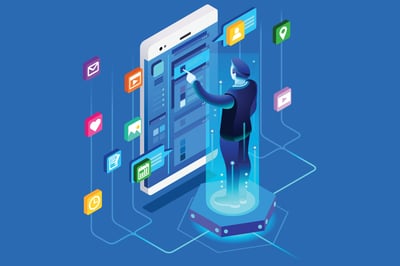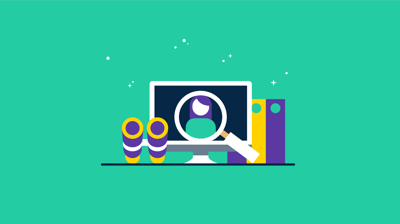March 27, 2023
 by Arijit Bose / March 27, 2023
by Arijit Bose / March 27, 2023

Of all 282 Google product obituaries, Inbox's demise was the most hurtful.
On May 28, 2015, Google's Inbox entered a cluttered market as the erudite second cousin of other email offerings. It did everything any email service could only dream of – building clean, sleek, and simple navigation. For the first (and only) time, 'Inbox zero' wasn't all hocus pocus.
Every competitor secretly knew it was miles ahead, yet, March 2019 became the end of the road for this email client, much to the dismay of the small (yet passionate) cult of followers it had amassed. Unfortunately for Inbox, the broad adoption of Gmail had a Pavlovian effect on customers' perception of how an email app should look and feel.
While Inbox radically simplified emails, it didn't see the wildfire adoption it hoped for because customers had expectations that needed to be met, not challenged. Better isn't always good.
Inbox was a great product. What it wasn't great at was driving user engagement at scale. This shows that any innovation is only as good as its adoption and engagement.
In a dog-eat-dog SaaS market, where transformations (pricing, innovation, or customer experience) are table stakes, user engagement is often a key determinant of success. It separates the successful from the could have been(s).
User engagement is how users interact with a product or service and derive value from it.
Repeatedly offering meaningful interactions ensures customers find a strong value correlation with the product or service and eventually develop into strong advocates.
Many confuse user experience and engagement primarily because they serve the same purpose: driving loyalty and minimizing churn. Yet, user experience ends at vetting how a user interacts with your product, while user engagement assesses how they derive value from it.
High user engagement occurs when users have repeated, meaningful interactions with your product or service. Active and engaged users stay with the product longer, adopt new features quicker, and influence overall profitability. It’s especially true for subscription businesses, where a customer’s decision to stay (or leave) substantially impacts recurring revenue.
If you're a product-led growth (PLG) business, user engagement goes beyond retention to impact acquisitions (since, in the absence of sales assistance, referral/inbound acquisitions take precedence).
Customer onboarding should be in line with user engagement principles. A seamless onboarding experience helps turn net new users into recurring revenue drivers and build a loyal network by nourishing advocates.
Users who find more value in your product are more likely to stay longer, renew subscriptions, and upgrade to a higher plan. User engagement is also great fodder for your retention engine.
There’s a considerable difference between long-term and hyper-engaged customers. A long-term customer could also be dormant, but a highly-engaged customer is an impending brand champion.
By identifying 'who's who' at the point of cancellation (yes, hyper-engaged customers can also have issues), you can effectively prioritize your retention efforts only to save high-ticket customers with potential for upsells or referrals.
Gauging user engagement also helps identify undisclosed issues plaguing long-term customers with a sudden churn intent. Acting on this information resolves deep-seated problems and determines (or predicts) shifting customer expectations, brand momentum, and churn.
This further helps you meet and exceed customer expectations, drive customer loyalty, and keep your business ahead of the competition.
User engagement drives product roadmap in high-growth SaaS. It helps product managers determine usage patterns, prioritize feature development, and rationalize resources when fixing products.
Identifying user engagement during onboarding, upselling, or downgrading brings actionable insights for process improvements. This could include better onboarding, user education, or packaging improvements that nudge customers into the next stage of their product journey, boosting customer lifetime value (LTV).
Early-stage SaaS companies are often growth-minded and focus more on customer acquisition and revenue growth. Yet, tempered customer wallets and economic uncertainty have pushed the average customer acquisition cost (CAC) payback period in SaaS to 12-17 months, impacting growth rates overall. So, today, it takes any SaaS business at least 12 months (on average) to reap material revenue benefits from an acquisition.
With a proper user engagement strategy at the early stages, you can avoid a high customer dropoff rate leading to revenue loss and non-recovered CAC. While many businesses offer free trials to grow their acquisition pool, a lack of focus on user engagement might further reduce conversion rates (from free trial users to paid).
Thoughtfully increasing user engagement helps formulate targeted strategies aimed at customer retention.
It's simple – your most engaged and active users will likely upgrade. User engagement is a core tenet for customer success and sales teams in land-and-expand SaaS businesses.
Models like usage-based pricing, where sustained repetitive usage (therefore, engagement) gradually scales the contract, also rely on teams monitoring engagement levels. A feature-use analysis also helps find undiscovered opportunities, use cases, and add-ons to upsell or cross-sell.
Every business (irrespective of its industry) has its unique quirks.
For example, while both HubSpot and Salesforce compete as CRMs, the latter only serves seat-based pricing, while the former experiments with freemium tiers, subscriptions, and usage-based overages.
So customers of each business vary in how they interact with and derive value from the products. User engagement discounts the product/feature-level differentiations between the two platforms.
Measuring user engagement is like identifying your primary success metric as a business. You first recognize the chasm of difference between you and other similar players, define your user engagement goals, and then pluck metrics reflecting how your customers perceive your business.
Businesses commonly start by analyzing user activity such as clicks, downloads, daily/weekly usage, active users, etc.
To get you started on the right foot, here are some actions that different businesses consider as engagement:
While this should give you an idea of various engagement metrics, let's look at some key metrics and what they mean.
It’s best to analyze each metric as a cohort rather than in silos to get actionable insights from user engagement. For example, you may seem to outperform if your total users are 80,000 per week, v/s 35,000 for your competitor.
However, a quick zoom into the total number of active users, number of core features used, and predicted upgrade revenue provides a better view of business health. These insights tie customers closer to your value as a business.
While the list isn’t exhaustive, here are some key user engagement metrics to keep close tabs on to gain customer loyalty and maintain bottom-line health.
Although the definition of "key actions" differs significantly from business to business, these are key milestones in the customer journey that determine customer engagement levels. Think marketing qualified leads (MQLs) and sales-qualified leads (SQLs) in terms of product consumption as opposed to marketing consumption.
Critical action thresholds have often powered some popular businesses to take moment-defining, early-stage, strategic action. For example, Facebook found it takes friending 30 people on the platform to get someone hooked.
This discovery helped them get people to build at least 30 friends on the platform, generating network effects that make the platform what it is today.
Monitoring key actions also gives insights into your product’s usability. For example, tracking the following can better exhibit engagement density:
Daily/weekly/monthly active users (DAU, WAU, MAU) help quantify the number of users engaged within a specific period. A healthy count of active users indicates your product's viability and value. It’s also good to view active users spread across a more extended period to identify general product stickiness.
Concentrated bursts of active users may point toward seasonal impacts, helping you determine the best times to extend engagement offers or discounts. In contrast, a low variance in active users over time may point toward a generally sticky product.
Checking active users for specific features or products (if you're a multi-product business) can also help discover what features or products are stickier than others, providing strategic add-on or cross-sell alternatives for you to grow customer LTV.
To improve product adoption, package the features central to your product well and know how much time a user needs to explore most or all of your features.
For example, tracking core features used in the first 30 days of product usage can exhibit top-of-mind requirements for your customers. This can better inform your sales discovery process and drive better conversions.
A high product adoption rate is also a leading indicator of highly engaged users who you can further nurture into champions or advocates.
A bird's eye view of key user engagement metrics gives businesses a glimpse of opportunities to optimize product adoption, make strategic growth decisions, and improve overall business performance.
Here are some practical applications for leveraging user engagement data and driving product and business improvements.
Users prefer simple and intuitive interfaces. Identifying repeated actions early improves product usability. You can get creative with ideal in-app user workflows, even experiment with push notifications and chatbots, or employ a guided approach to product adoption.
Remove any possible friction points in the customer journey, such as additional steps to arrive at key product features.
User education is critical in improving engagement. So pay special attention to new users and educate them on using the product best. This reduces time-to-value. Typically, in-app onboarding flows, white-gloved training for first-time users, or detailed documentation and videos significantly curb attrition rates for new users.
Low user engagement among more experienced users also symbolizes the need for continued education (or product simplicity). It can also be a sign that your workflow to continually educate existing customers about new or core features, advanced tutorials, and shortcuts needs more work.
Engaged users are easier to retain. Improving the product's usability and proactive user education enhances user experience and retention. The more value users see in your product, the less likely they will leave.
When your product is stickier, users build familiarity. Finding and switching to a competitor or alternative is easier if you leave fundamental needs unaddressed.
Here are some ways user engagement contributes to customer retention, helping improve net dollar retention (NDR) and bottom-line profitability.
Let’s look at five key strategies to reduce churn using user engagement.
User engagement directly ties to your product’s perceived value. Hence, the first step to reducing churn is understanding where your users find the most value in your product. The key here is to avoid assuming what’s valuable and use user engagement data to quantify the value.
Once you understand how your users define value, you can design specific flows and cycles, so they arrive at the value sooner than later. This also impacts how you look at your product roadmap so you can prioritize features resulting in higher user value.
When you know what features are most valuable, it’s natural to reshuffle product packaging to make them available in the most popular plan. Similarly, try experimenting with your pricing strategy too. A large chunk of your user base likely gets valued features in their most desired plan. This value proposition contributes to higher retention.
Customers leave for many reasons. To proactively predict churn, analyze patterns in user engagement. How many users activate after signing up? How many active users do you have? How many of them explore the core features? Analyzing churned users’ activities lets you see patterns in their journey that you can use to your advantage.
A delightful onboarding experience creates loyal users and long-term engagement. Your onboarding sequence should walk through your key features and intended user actions within the first few days of product usage.
A seamless onboarding experience helps users realize their Aha! moment with your product early in their journey. This improves product adoption and keeps churn in check.
Churn reduction strategies cannot be one-size-fits-all. They change based on engagement levels. For unengaged users, you need frequent communication, training, and experimentation to improve their engagement levels.
On the other hand, you should work toward making an engaged user stay that way for a long duration. You can also segment users as new and experienced to deploy targeted strategies and retain them longer.
User engagement helps discover how customers meet their goals with your product and identifies areas for improvement. User engagement funnels only make sense if your primary focus is supporting customer needs.
Google Inbox was meant to be the perfect product. Yet, it failed to capture customers' imagination and made too many changes that challenged their perceptions. It didn’t follow the basic principle – technology needs to offer value from the customer's lens, not the innovator's.
Continuous tracking of user engagement needs to be an operational principle. It’ll help see how a product could be better delivered to the customers and uncover customers' insights about your product. Ultimately, customer loyalty is a function of the derived value.
Put your product at the center of your organizational strategy. Learn how with a product-led SaaS pricing strategy.
Arijit Bose is a content strategist with nearly a decade of SaaS experience specializing in GTM and revenue growth. He has bylines in Reuters and G2 and has shaped narratives at Clazar and Chargebee, among others. In 2022, he won SaaS Brief's MVP award and has authored books on pricing and cloud growth.
How do you determine the success of a mobile app?
 by Chris Ciligot
by Chris Ciligot
Whether you do it subconsciously or on purpose, it’s human nature to put things into groups.
 by Mara Calvello
by Mara Calvello
Engagement is everything.
 by M.Salim Dın
by M.Salim Dın
How do you determine the success of a mobile app?
 by Chris Ciligot
by Chris Ciligot
Whether you do it subconsciously or on purpose, it’s human nature to put things into groups.
 by Mara Calvello
by Mara Calvello


